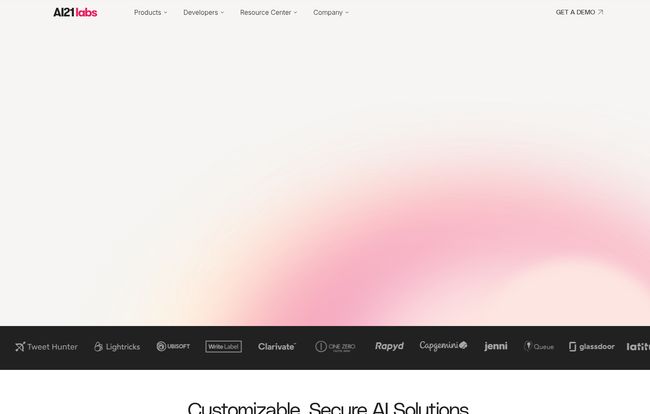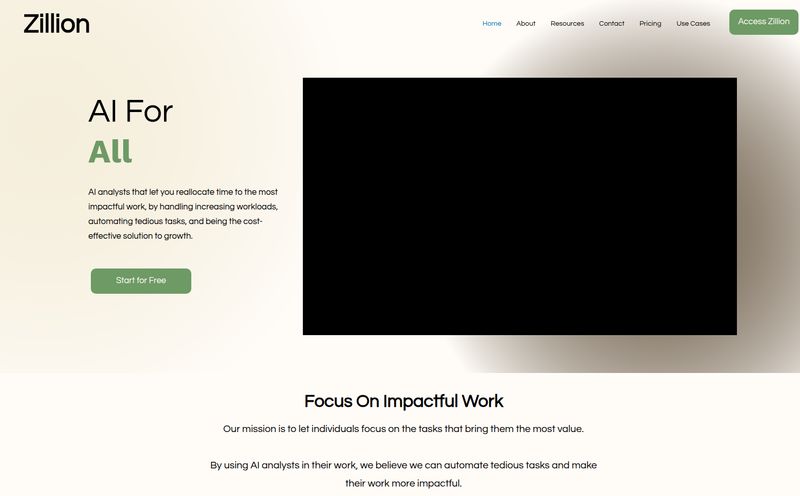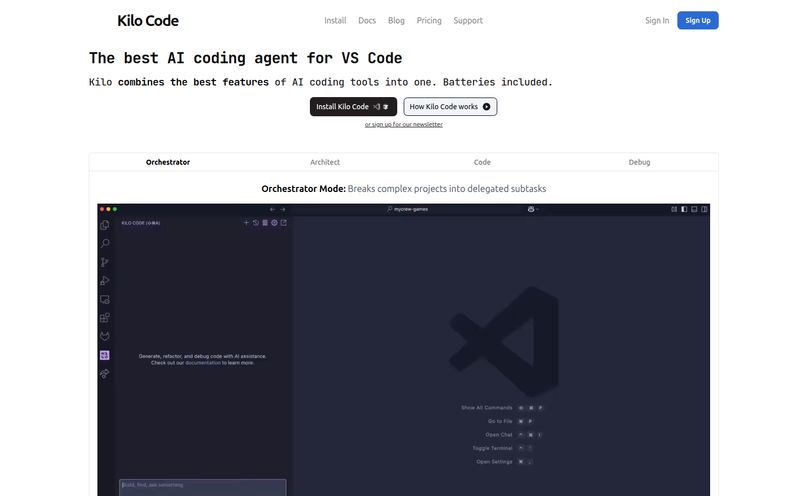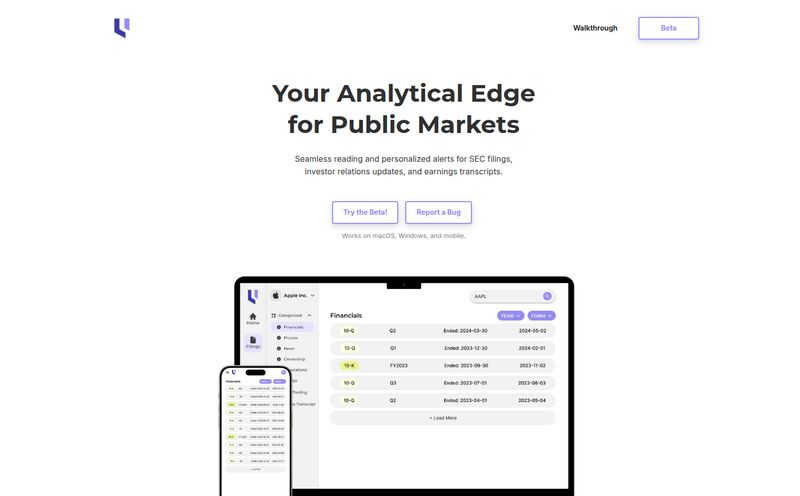Integrating AI into a serious business workflow can feel less like a futuristic dream and more like trying to herd cats. In a hurricane. You’ve got this brilliant language model over here, a powerful data analysis tool over there, and a dozen APIs that are supposed to talk to each other but mostly just give each other the silent treatment. It’s a mess.
I’ve seen it happen. A company gets excited, invests in a few different AI tools, and expects magic. Instead, they get disconnected processes, unreliable outputs, and a giant headache for their dev team. The promise of intelligent automation gets lost in the sheer complexity of it all. It’s like having a world-class orchestra full of virtuoso musicians, but no conductor to tell them when to play. The result? Noise. Not music.
This is the exact problem that got me looking into AI21 Labs and their flagship system, AI21 Maestro. They aren't just building another AI model to throw on the pile. No, they're building the conductor. The project manager. The central nervous system designed to orchestrate all those powerful but chaotic AI components into a single, coherent workflow. And frankly, it’s about time someone did.
So, What Exactly is AI21 Maestro?
Okay, let's cut through the marketing jargon. At its core, AI21 Maestro is an AI Planning and Orchestration System. Think of it less as a single AI tool and more as a smart manager that you give a complex goal to. Instead of you having to manually figure out which AI model to use for which step, how to verify the output, and how to chain it all together, Maestro does it for you.
For example, you could give it a task like: “Analyze these 500 customer support tickets, identify the top three recurring issues, summarize them, and then draft a report with actionable recommendations for the product team.”
A normal AI setup would choke on that. You'd have to first use a model to classify the tickets, another to extract key phrases, a different one to summarize, and maybe a GPT-4 class model to draft the report. You’d be copying and pasting, running scripts, and praying the outputs from one step made sense as inputs for the next. Maestro, on the other hand, looks at the entire task, breaks it down into logical sub-tasks, and then uses the best foundation models (like their own Jamba models) to execute each step, all while verifying the results along the way. It’s a game changer.

Visit AI21 Labs
The Features That Actually Matter for Your Business
A lot of platforms boast a long list of features, but I’ve been in this game long enough to know only a few truly move the needle. Here’s what stood out to me about Maestro.
Beyond Just a Smart Assistant
The term “AI” gets thrown around a lot, usually referring to a simple chatbot or text generator. Maestro is in a different league. Its ability to handle multi-step, complex reasoning is its superpower. It’s designed for the heavy lifting: deep document analysis, complex research synthesis, and automating entire business workflows that have, until now, been far too nuanced for a single AI to handle. This isn't about asking an AI to write a poem; it's about asking it to run a department.
Trust, Transparency, and the End of the 'Black Box'
Here's my favorite part, and something I believe is critical for enterprise adoption. For years, the biggest pushback against AI in critical systems has been its “black box” nature. You put data in, you get an answer out, but you have no earthly idea how it got there. That’s a non-starter for any regulated industry or for any business that values accuracy. AI21 Maestro tackles this head-on with full transparency into its task execution. It provides structured validation reports showing every step it took, the data it used, and how it reached its conclusion. This isn't just a feature; it’s a trust-building machine. You can finally see the AI's 'work' and prove its accuracy.
An AI That Learns Your Environment
Another huge plus is that Maestro is designed to be adaptive. It learns from your specific enterprise environment, your data, and your requirements. It’s not a one-size-fits-all solution dropped in from the cloud. The system gets better and more aligned with your unique needs over time. This means more reliable results and less time spent manually correcting or re-prompting the system. It actually gets to know you, which is more than I can say for some of my colleagues. Just kidding... mostly.
Let's Talk Money: The AI21 Pricing Model
Ah, the part everyone scrolls to first. AI pricing can be a murky swamp of hidden fees and confusing credit systems. I was pleasantly surprised by AI21's straightforward approach. They offer two main tiers.
| Plan | Best For | Key Offerings |
|---|---|---|
| Pay As You Go | Individuals, startups, and teams testing the waters. | Usage-based pricing, access to all features, unlimited seats, and a $10 free trial for 3 months. |
| Custom Plan | Scaling companies and enterprises. | Everything in the free plan plus volume discounts, private cloud hosting, priority support, and a dedicated account manager. |
The Beauty of Pay As You Go
The usage-based model is fantastic because you only pay for what you actually use. No hefty monthly subscription for a tool you might only need for specific projects. The free trial is also genuinely useful – $10 in credits is enough to run some meaningful tests and see if the platform is a good fit, all without whipping out the company credit card. I appreciate that.
A Quick Word on Tokens
Like most modern AI systems, AI21 works on a token-based system. A token is basically a piece of a word. The website says an average token corresponds to 1 word or 6 characters of English text. Their foundation models, like Jamba Mini and Jamba Large, have different costs per million tokens for input and output. For example, the efficient Jamba Mini is just $0.2 per 1M input tokens. It’s a very cost-effective way to process large amounts of data without breaking teh bank.
The Good, The Bad, and The Realistic
No tool is perfect, and it’s my job to give you the full picture, not just the sunshine and rainbows from the sales page.
What I Really Like
The upsides are pretty clear. You get reliable, accurate, and scalable results. The transparency is a massive win for any serious business. And the usage-based pricing makes it accessible. In my opinion, this combination directly addresses the biggest fears that have held back enterprise-wide AI adoption for years: unreliability, opacity, and unpredictable costs.
A Few Things to Keep in Mind
Now for the reality check. Some might call these 'cons', but I see them as practical considerations. First, this is a powerful system, not a plug-and-play app. There will be an initial setup and configuration process to connect your tools and define your requirements. You can't just turn it on and expect it to read your mind. Second, you are placing a lot of trust in the system's planning capabilities. While impressive, there might be niche cases where its approach doesn't perfectly align with your own. Finally, there's a learning curve. To get the most out of Maestro, you’ll need to invest some time understanding how it thinks and operates. It’s a power tool, not a magic wand—you still need to learn how to wield it.
So, Who Is This Really For?
If you're a solo blogger who needs an AI to help write articles, AI21 Maestro is probably overkill. You're better off with a simpler generative AI tool.
But if you are part of an enterprise, a research institution, or a fast-growing startup dealing with complex, multi-step information workflows, then you are precisely who AI21 built this for. Think of teams in:
- Legal: Analyzing thousands of documents for discovery.
- Finance: Performing complex market research and generating reports.
- Customer Support: Automating the analysis of support tickets to identify root causes.
- R&D: Synthesizing data from academic papers and internal experiments.
If your work involves turning a mountain of messy data into a molehill of actionable insight, Maestro could become your new best friend.
The Final Chord
In a world overflowing with AI 'soloists', AI21 Maestro stands out by choosing to be the conductor. It's not trying to be the loudest instrument in the room; it’s trying to make every instrument play in perfect harmony. The focus on orchestration, transparency, and enterprise-grade reliability is a refreshing and much-needed shift in the AI space.
While it requires some initial investment in terms of setup and learning, the potential payoff is enormous. It’s a move from chaotic, piecemeal AI experiments to a structured, scalable, and trustworthy AI strategy. For businesses ready to get serious about automation, AI21 Maestro might just be the ticket to finally making some beautiful music.
Frequently Asked Questions (FAQ)
What is AI21 Maestro in simple terms?
Think of it as a smart project manager for AI. You give it a complex task, and it automatically breaks it down, uses the right AI tools for each part, and gives you a reliable, fully documented result.
Is AI21 Maestro free to try?
Yes, it is. They offer a “Pay As You Go” plan that comes with a free trial of $10 in credits for the first 3 months, with no credit card required to start. This is usually enough to run several test projects.
How does the usage-based pricing work?
You are charged based on the number of 'tokens' (pieces of words) you process. This means you only pay for what you use, which is very cost-effective for projects with variable workloads. You are not locked into a high monthly fee.
What's the difference between AI21 Maestro and a standard LLM like ChatGPT?
A standard LLM is great at single-turn tasks like writing an email or answering a question. AI21 Maestro is an orchestration system designed to handle complex, multi-step workflows that require planning, using multiple tools, and validating information along the way.
Is AI21 Maestro difficult to set up?
There is an initial setup process to connect your data sources and tools. It's more involved than a simple app, as it's an enterprise-grade system. However, this initial effort is what allows it to perform complex, customized tasks reliably.
Can I deploy AI21 solutions on my own servers?
Yes. While they offer a SaaS solution, the Custom Plan includes options for private cloud or on-premises deployment for companies with strict data security and compliance needs.



